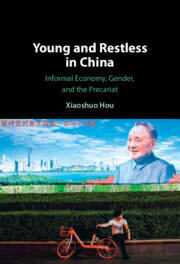References
Published online by Cambridge University Press: 02 November 2024
- Type
- Chapter
- Information
- Young and Restless in ChinaInformal Economy, Gender, and the Precariat, pp. 141 - 150Publisher: Cambridge University PressPrint publication year: 2024

